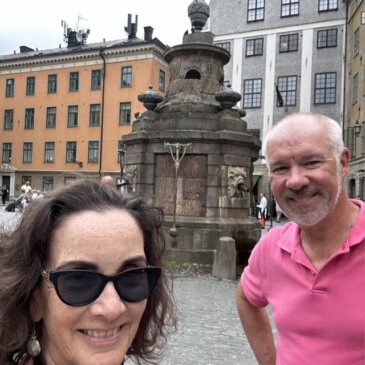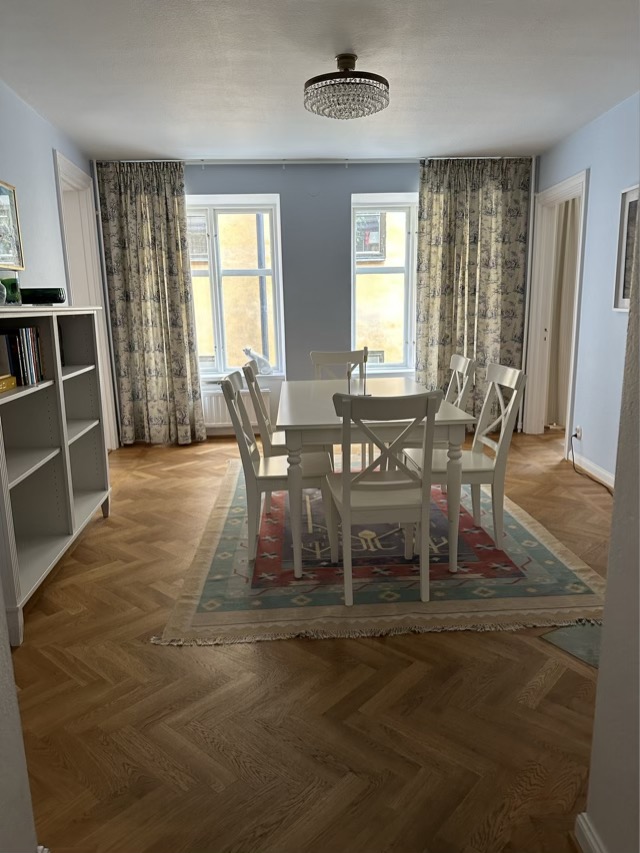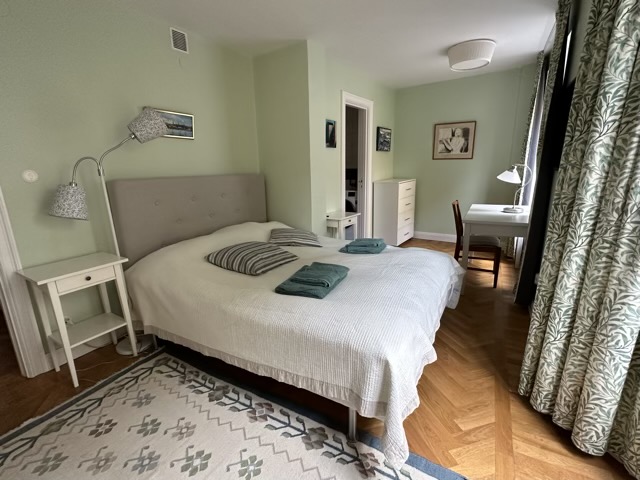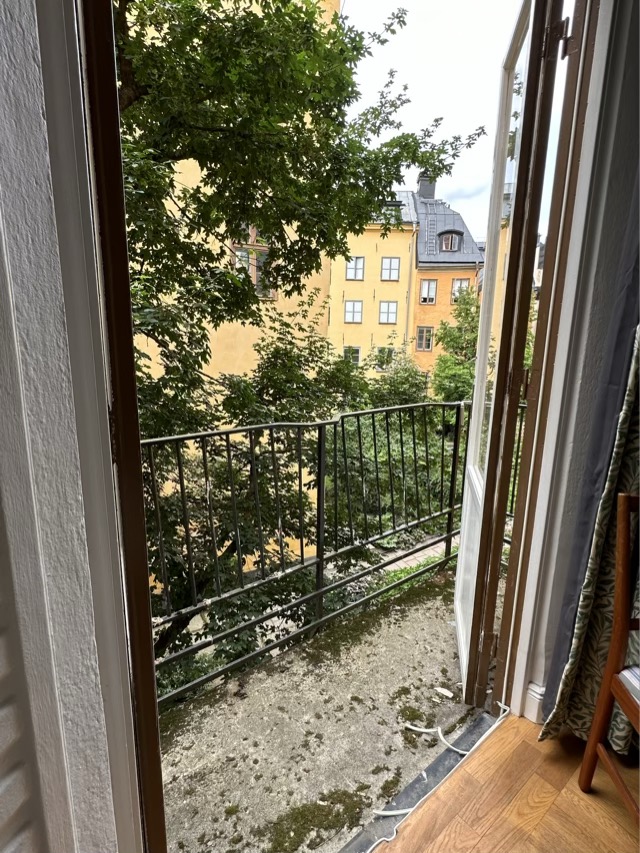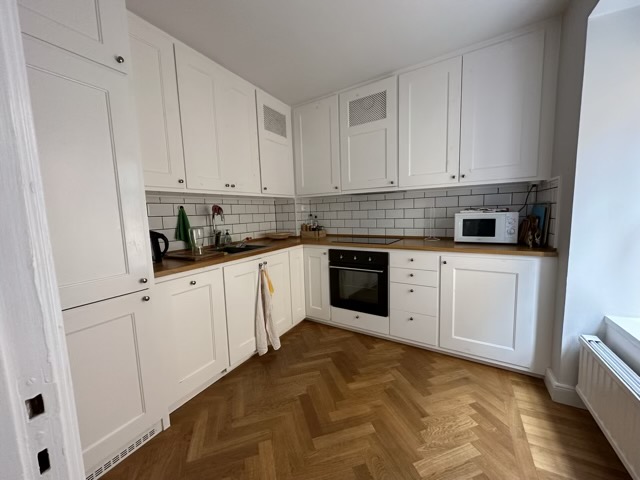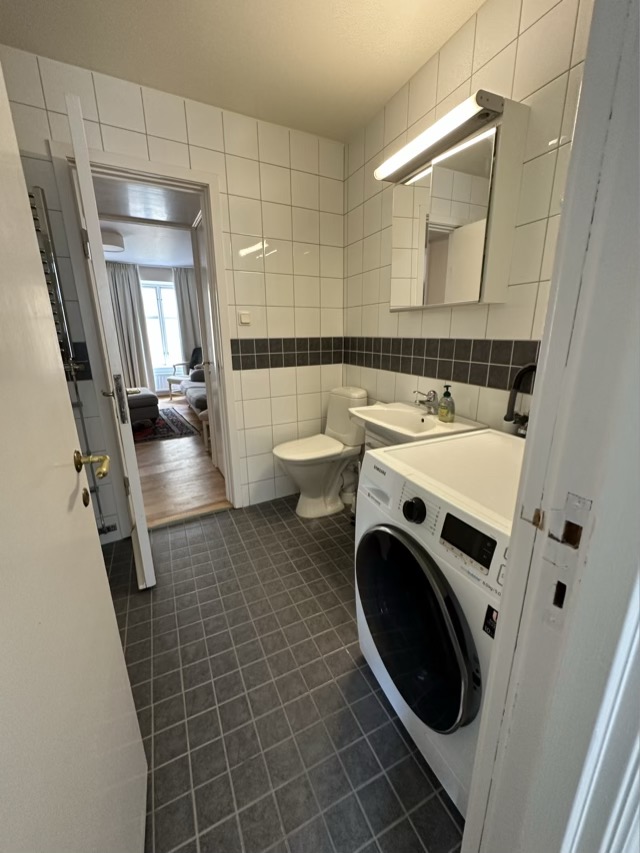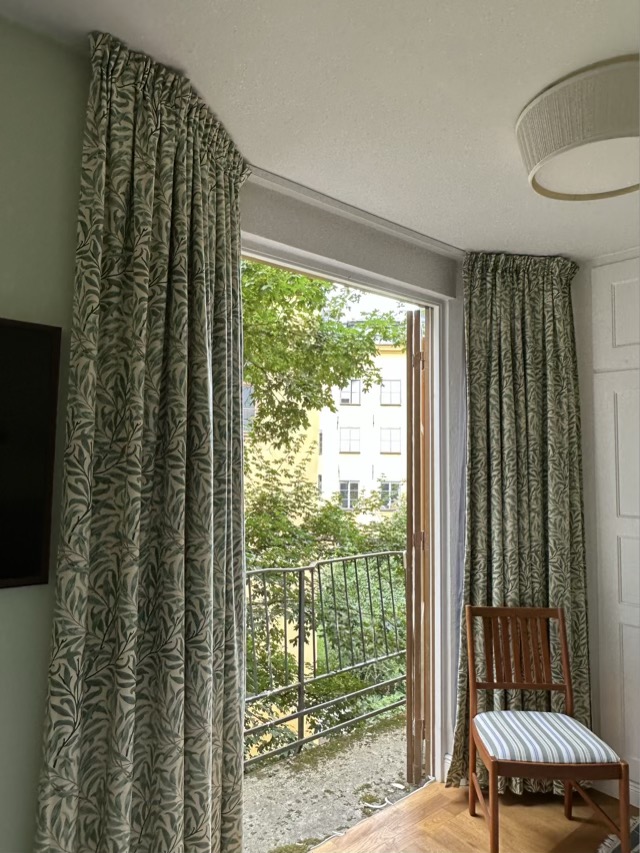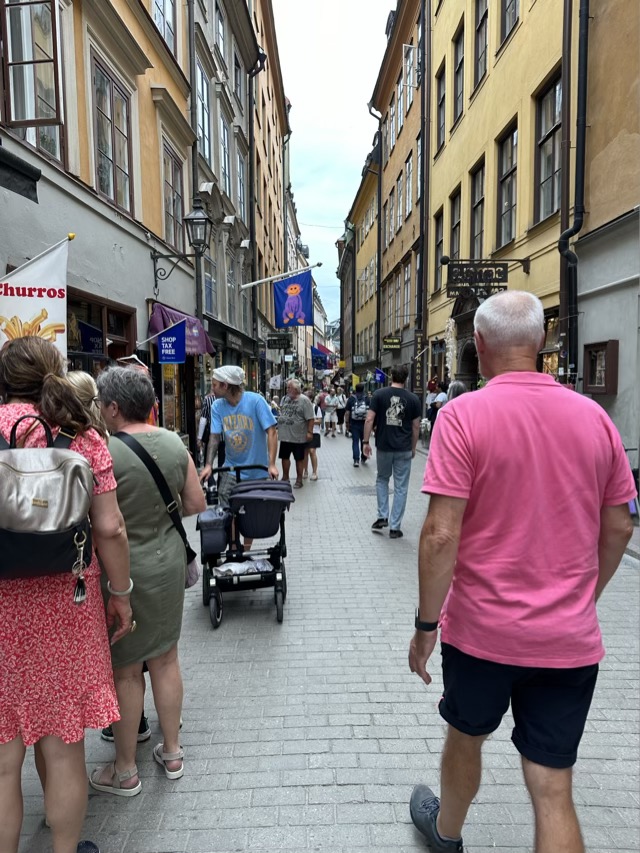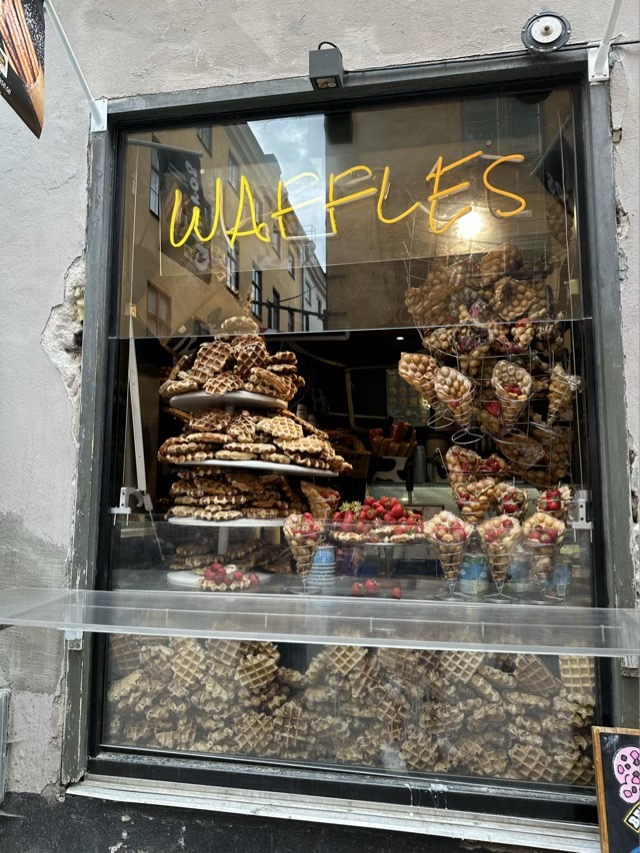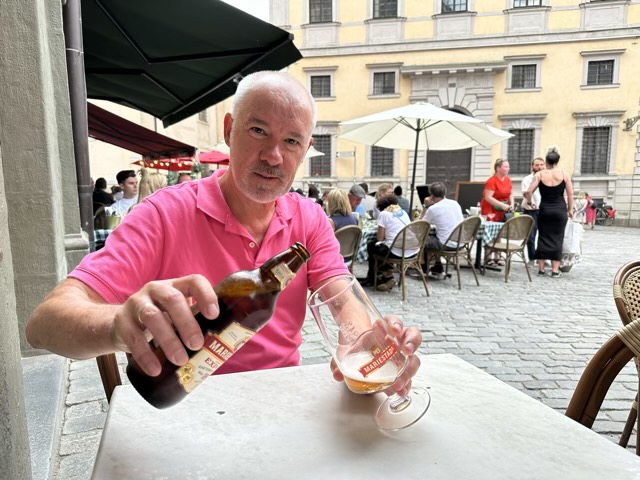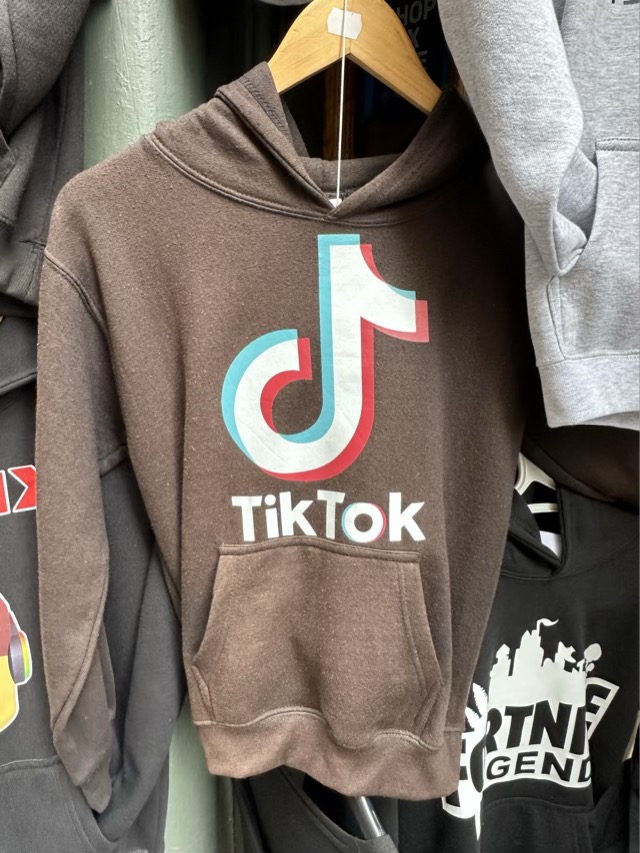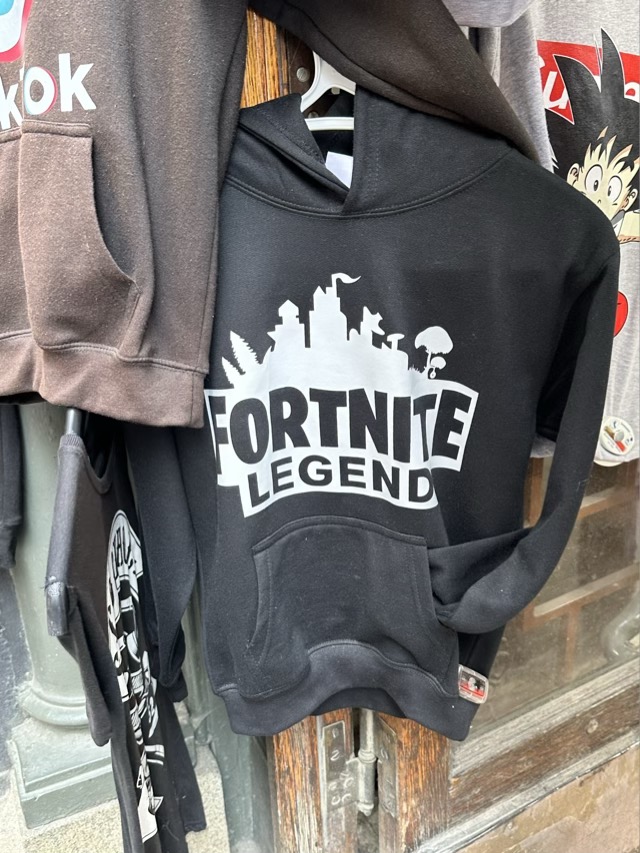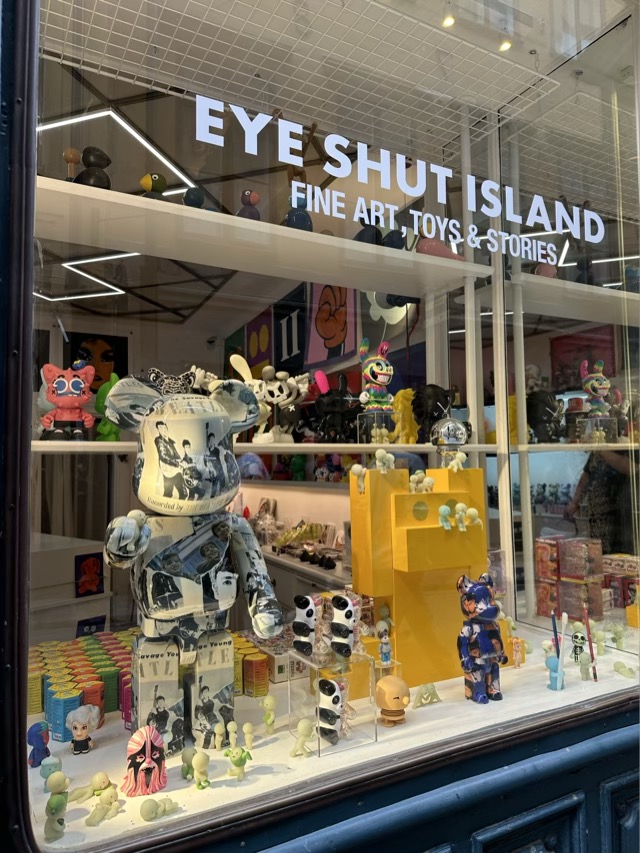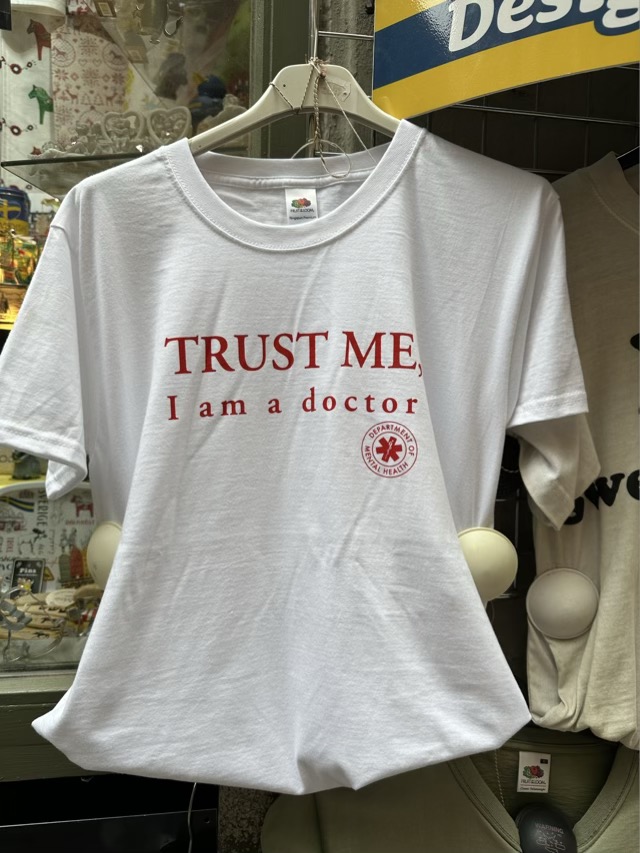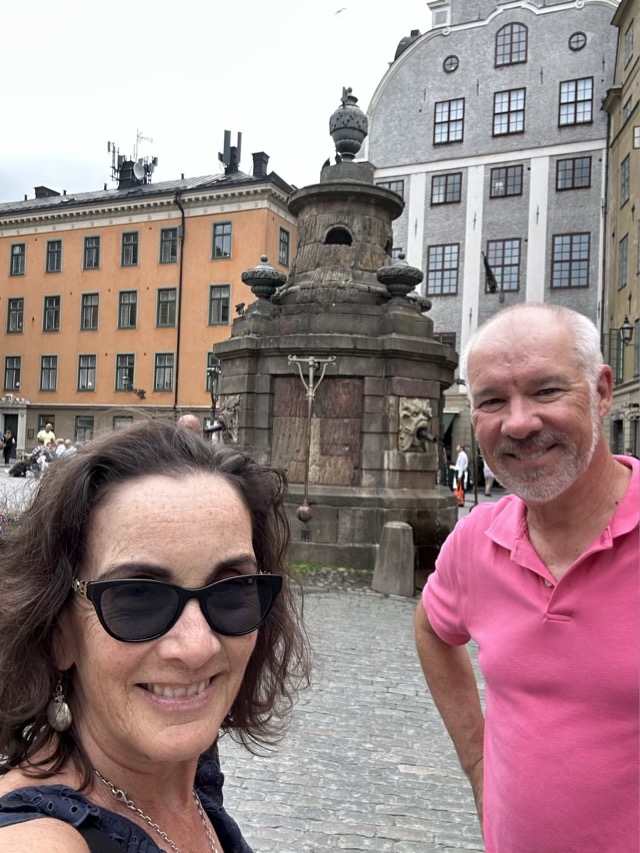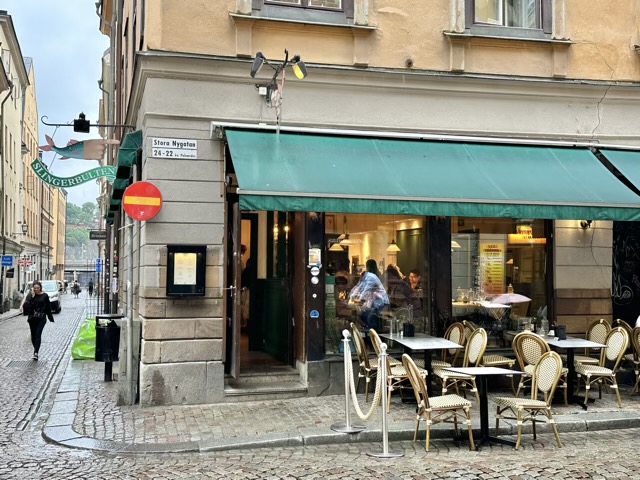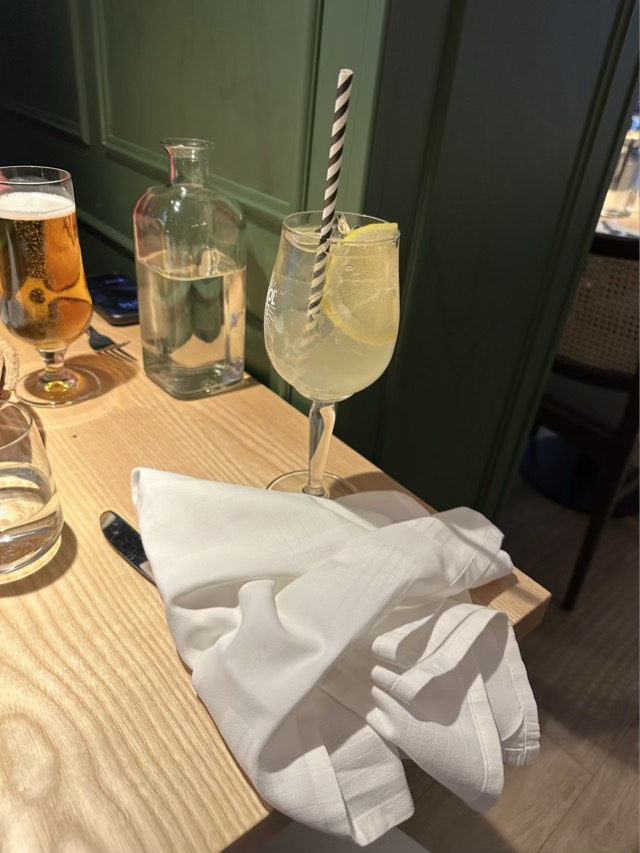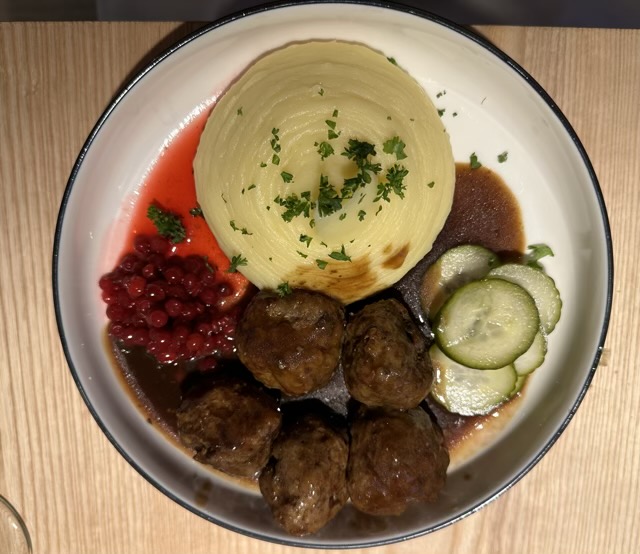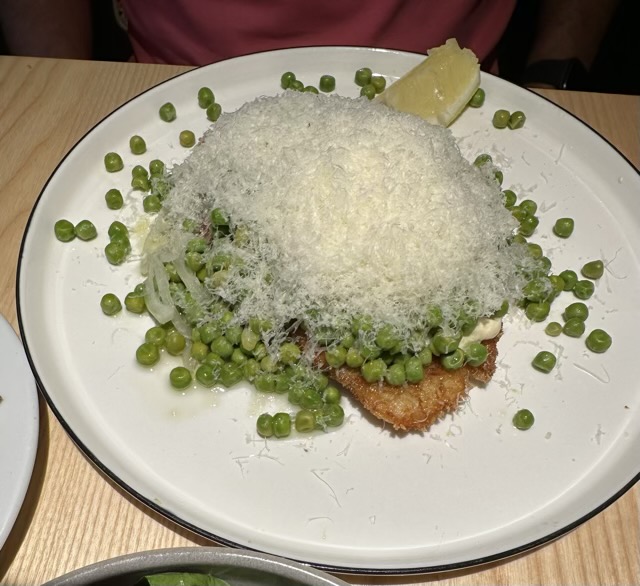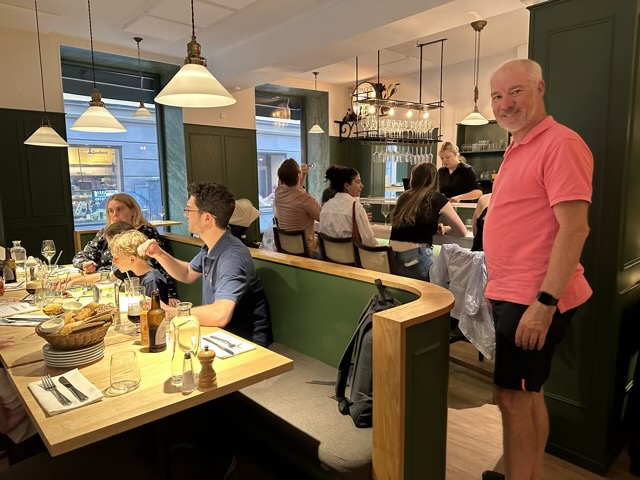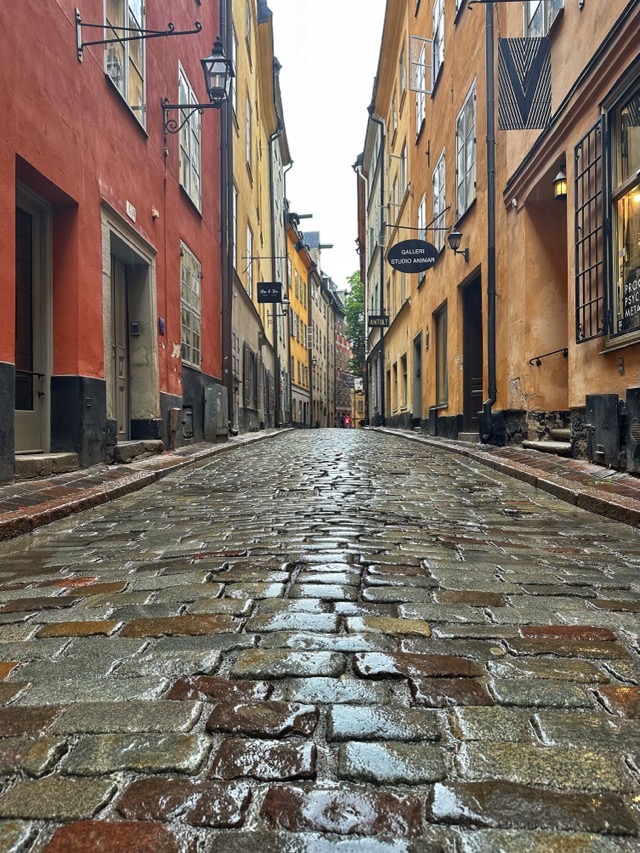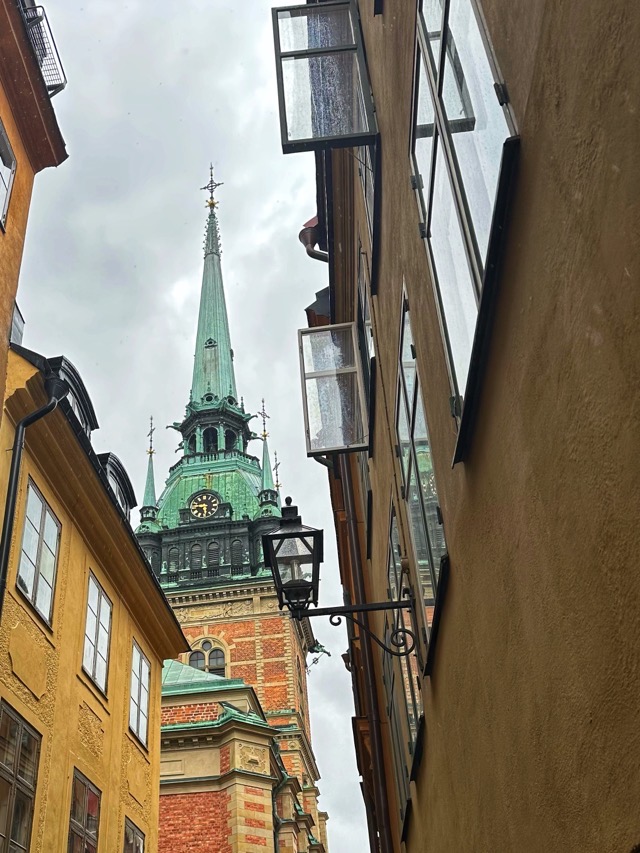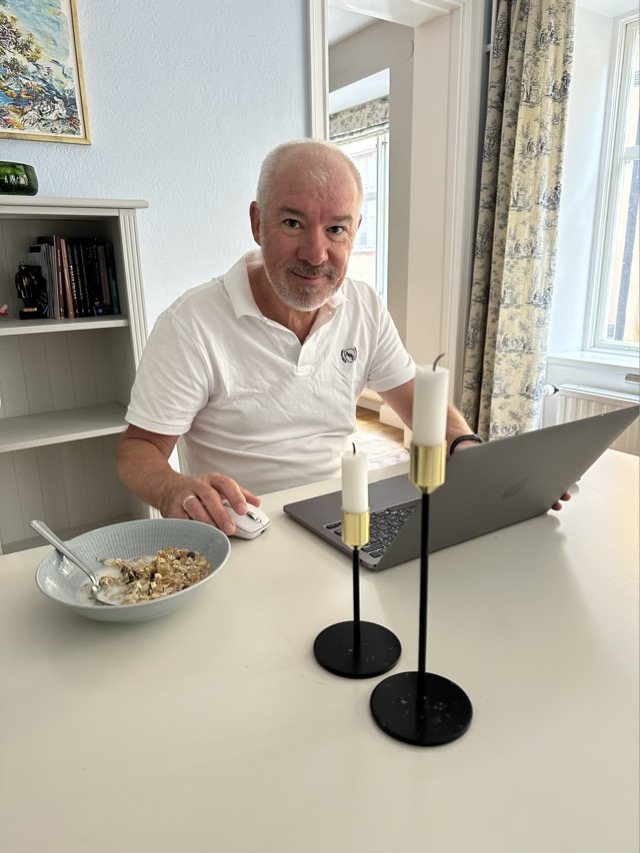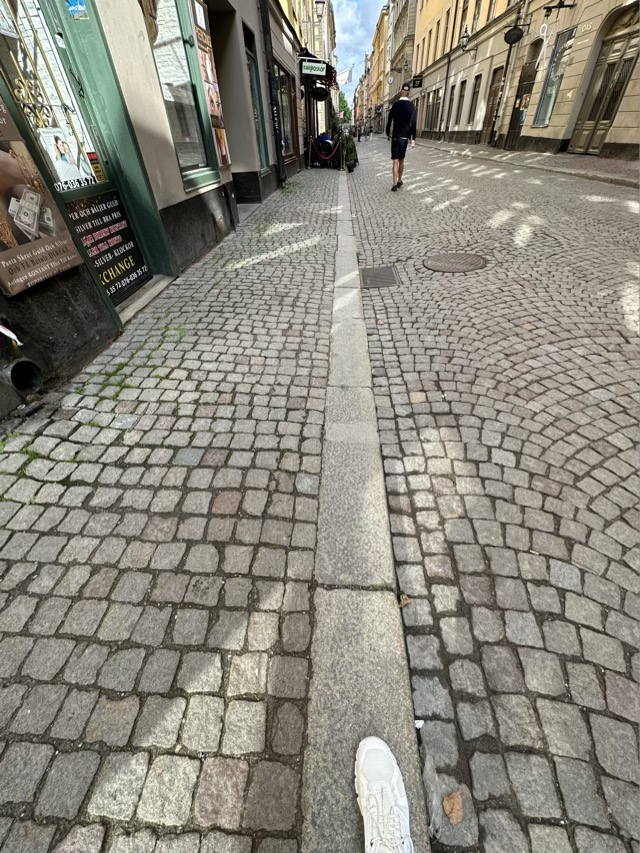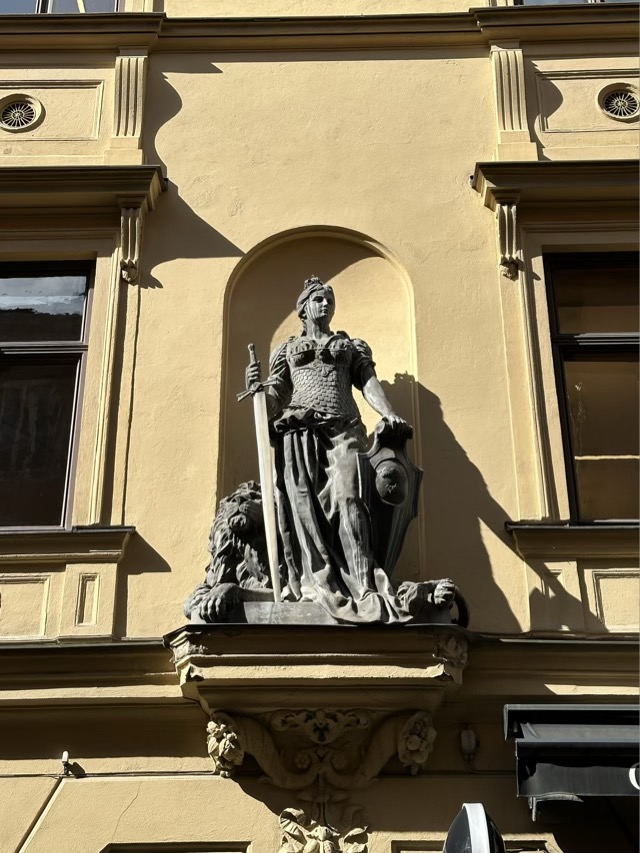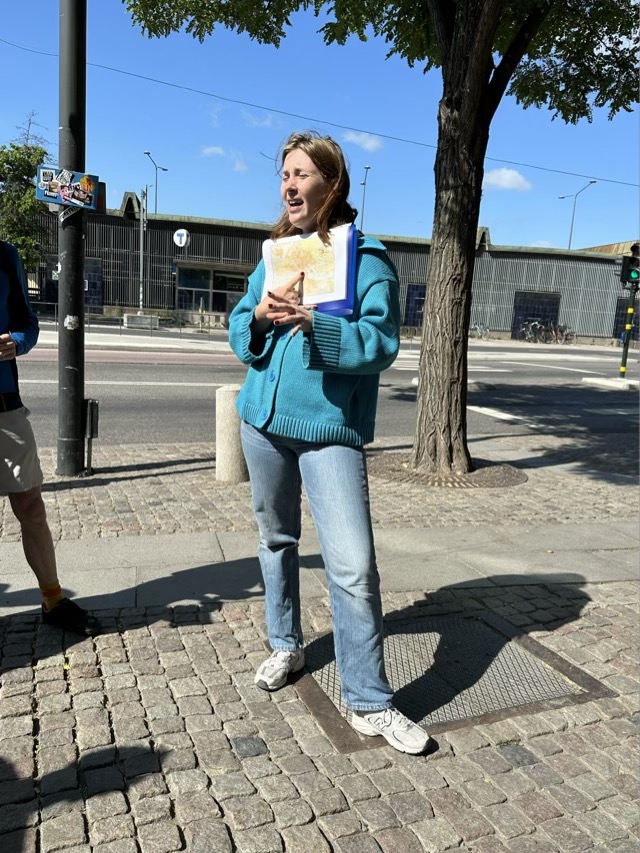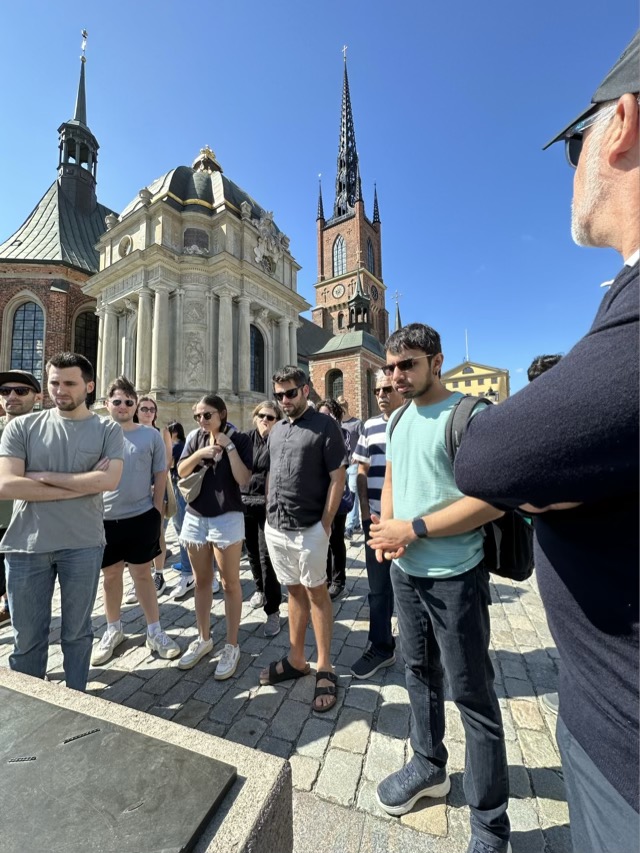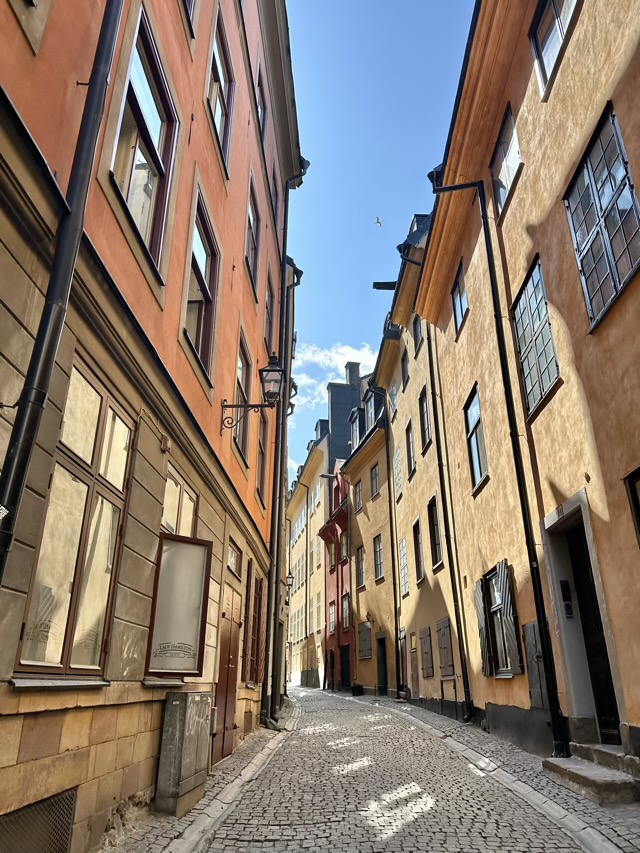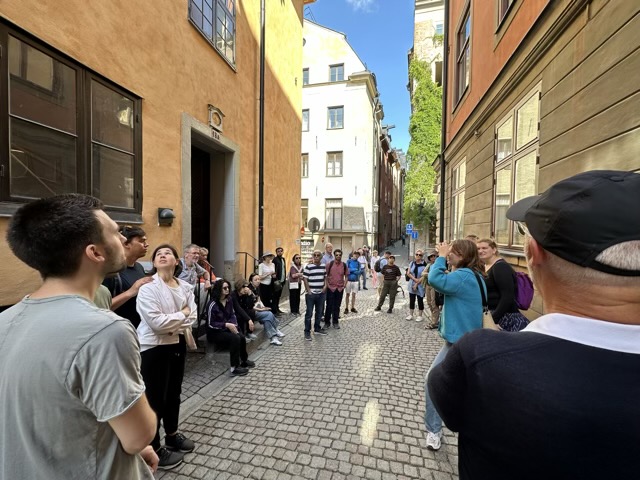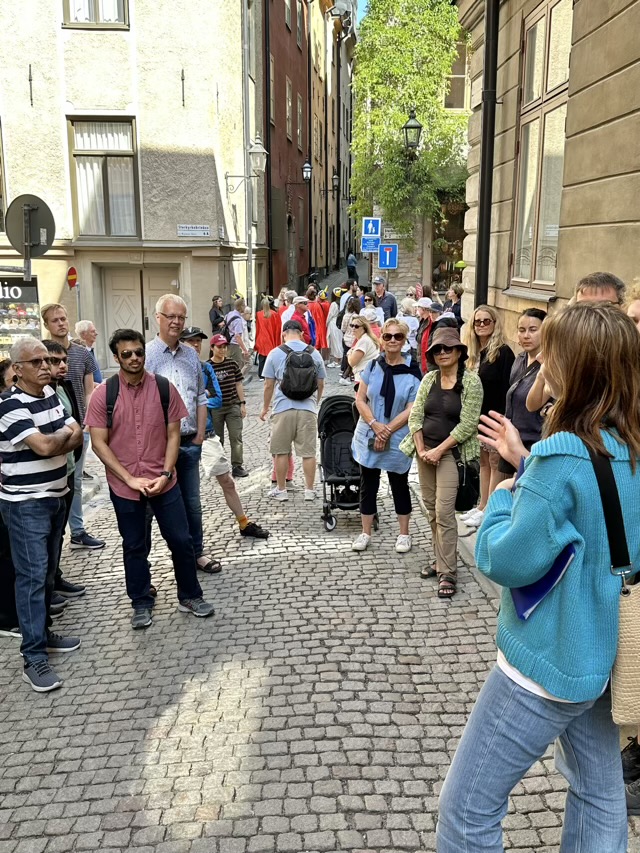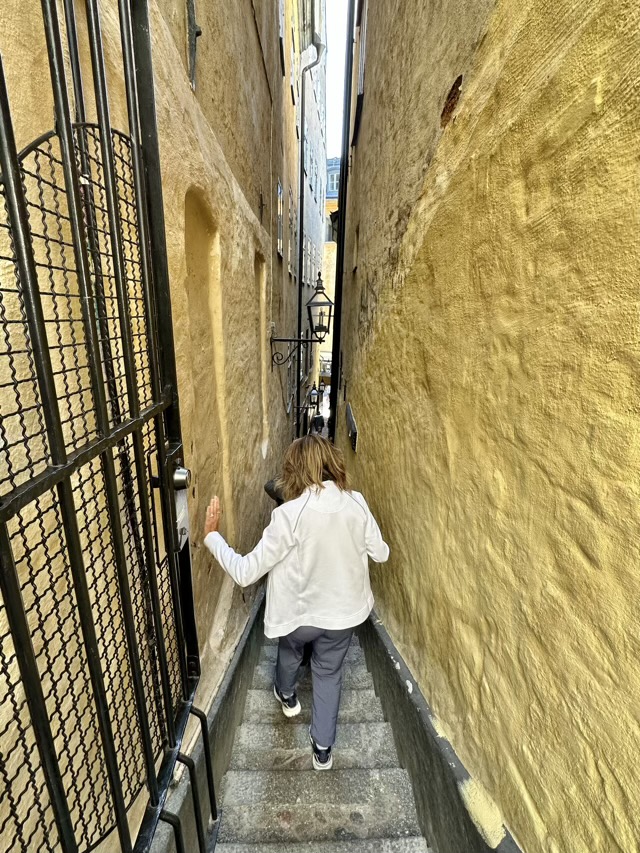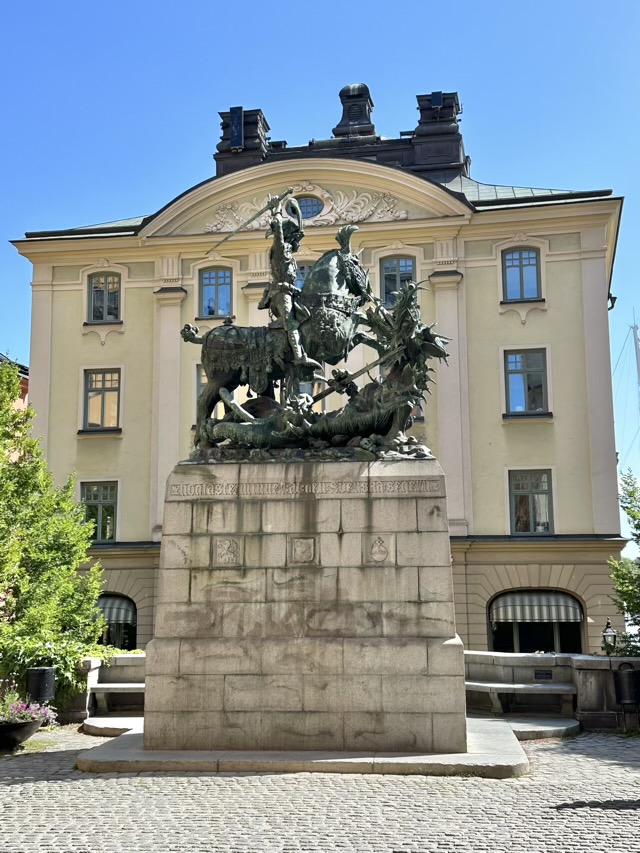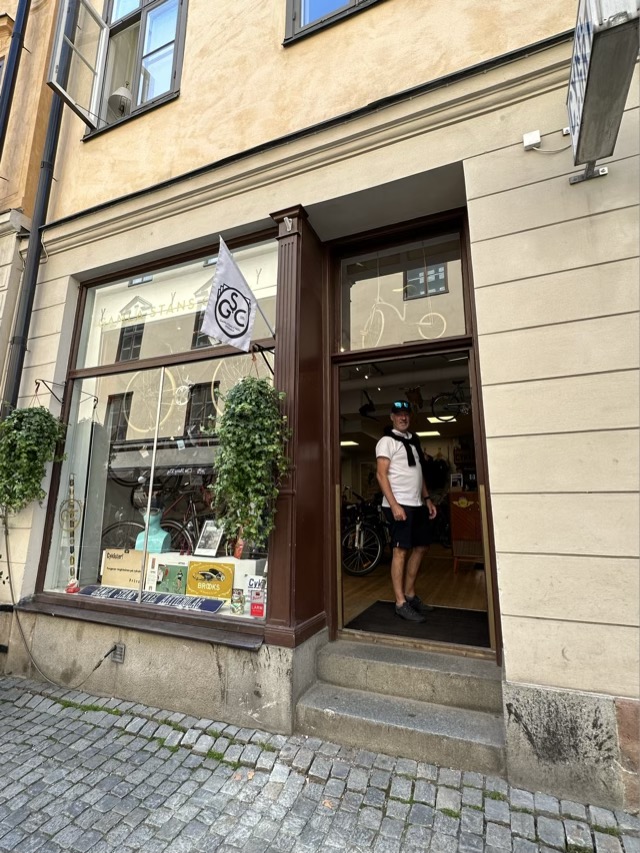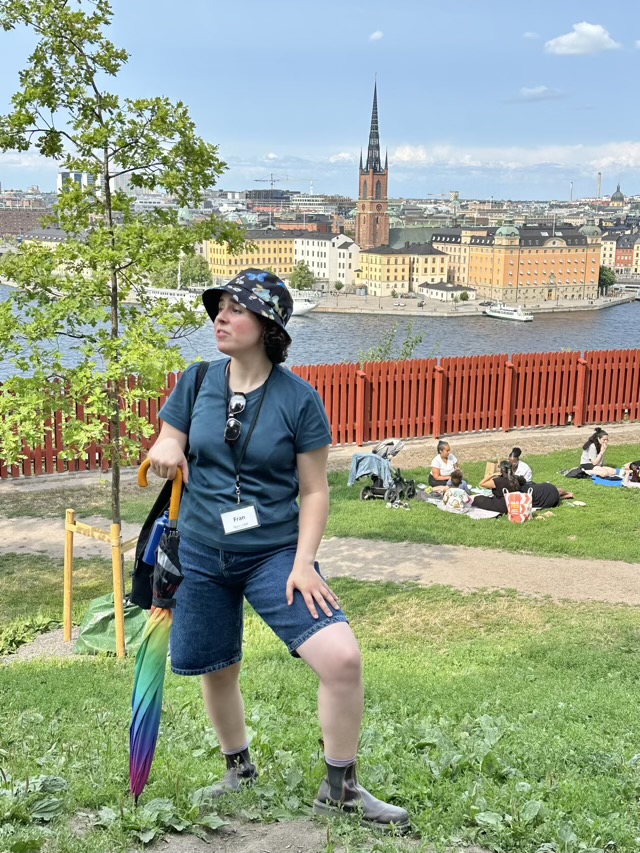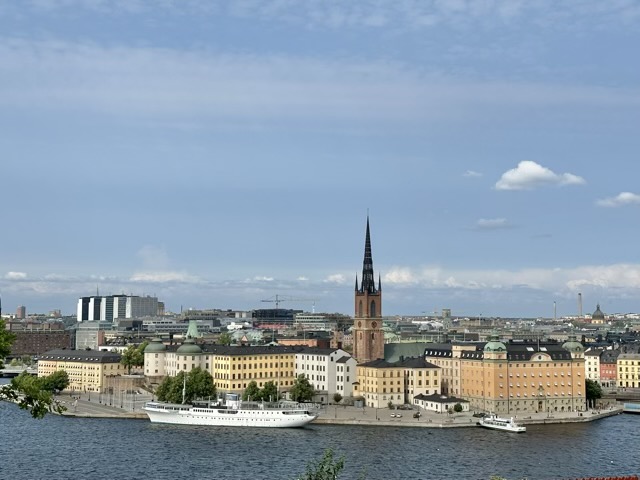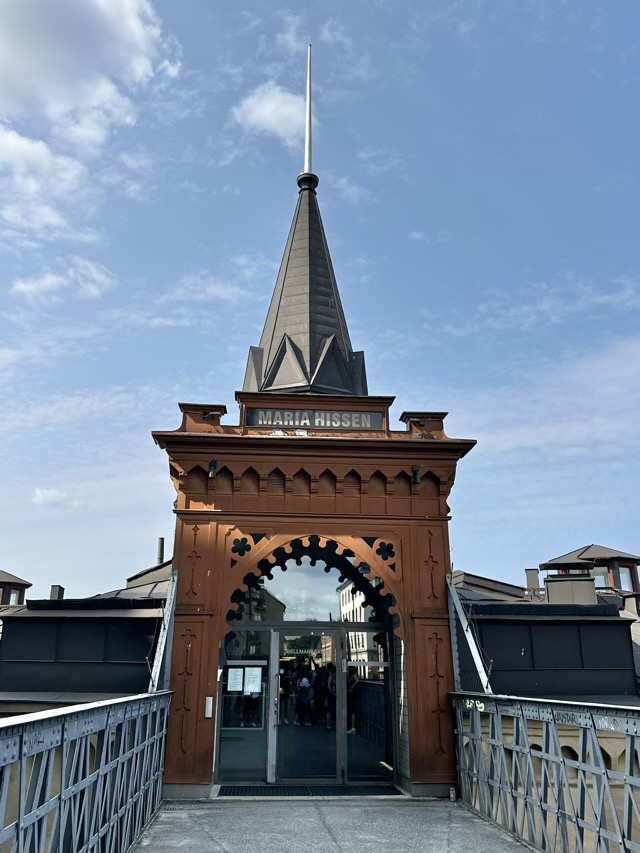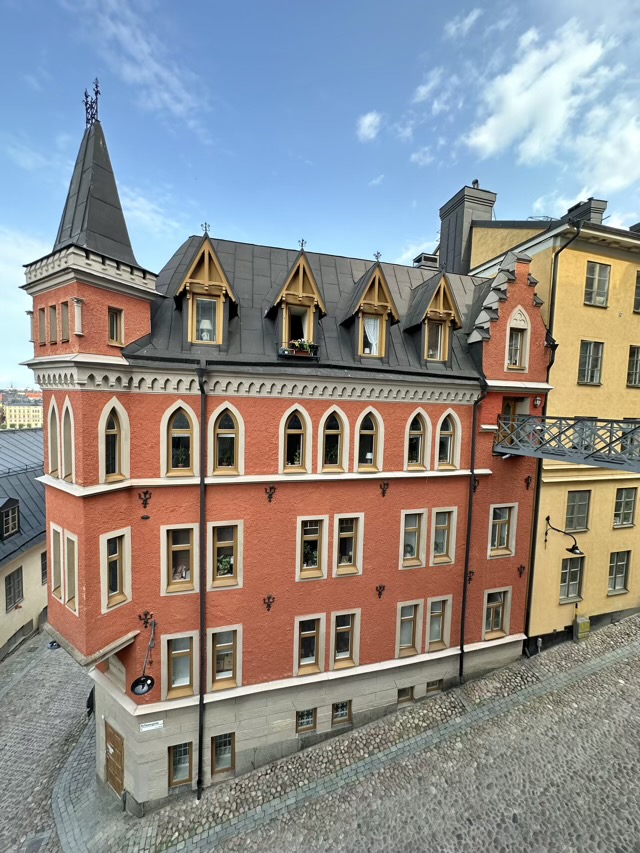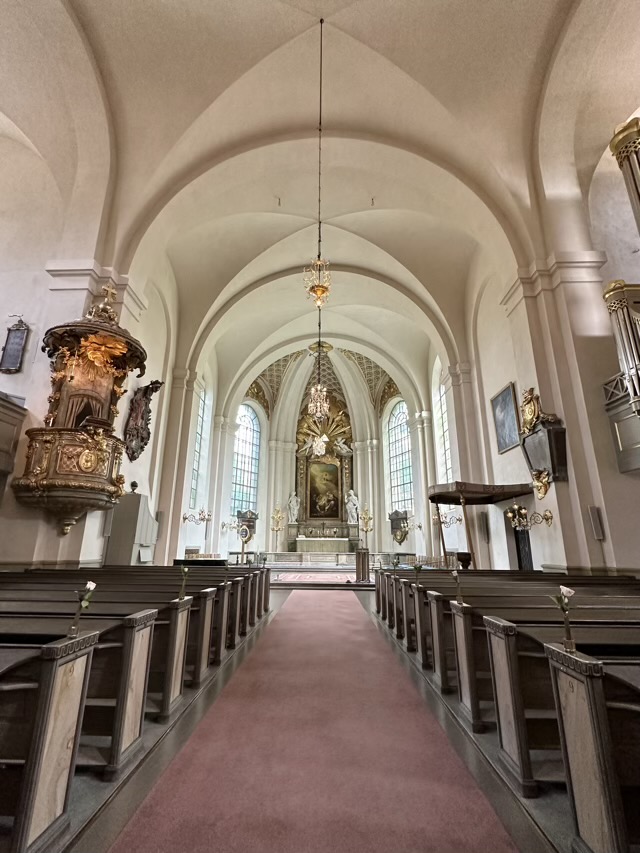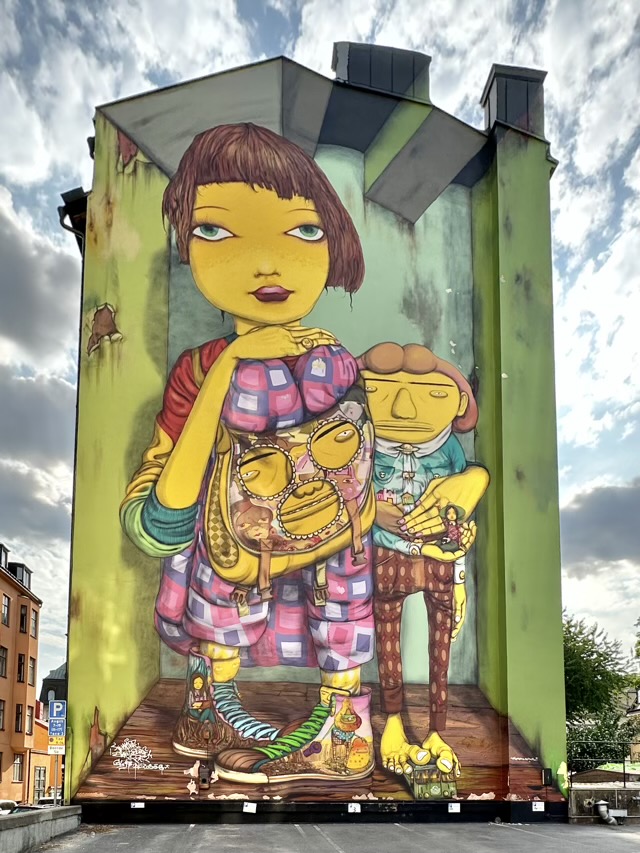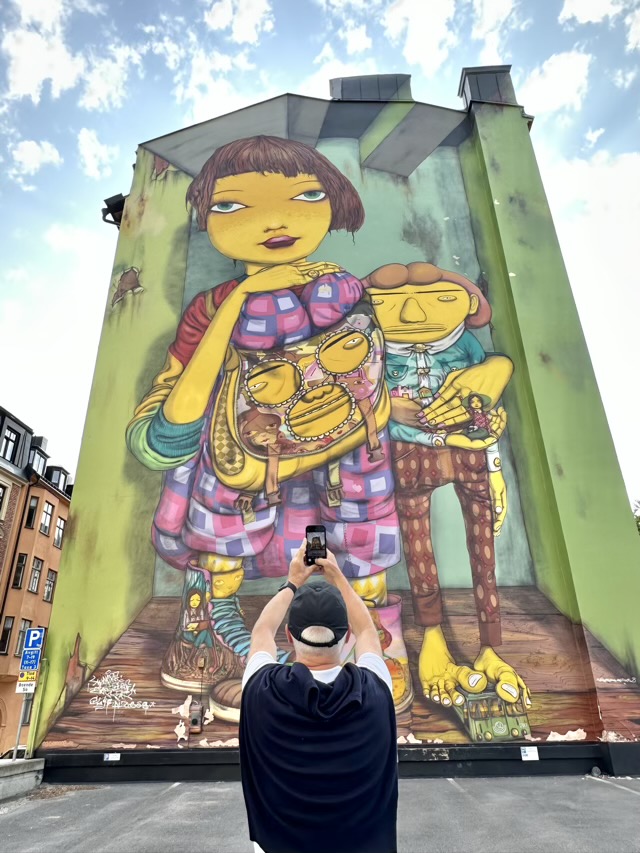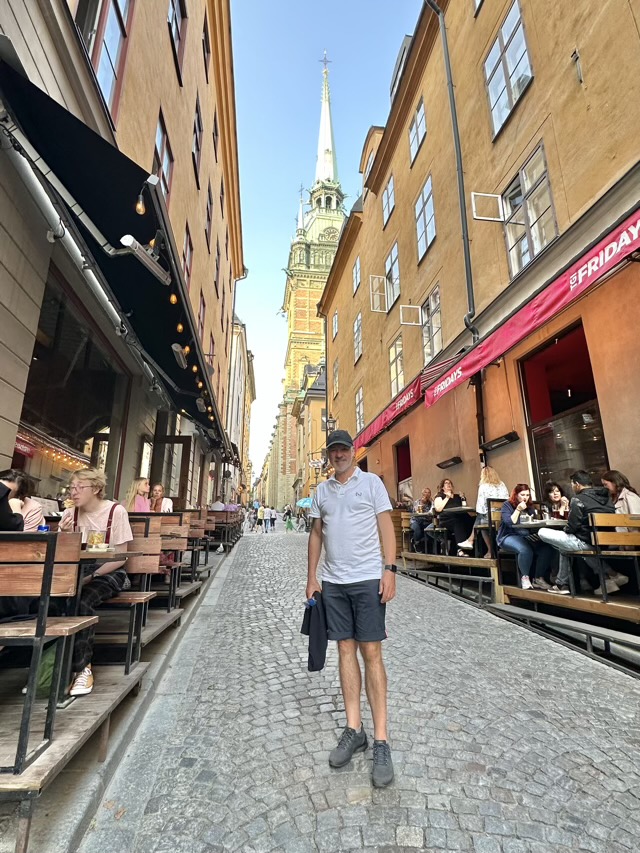Friday 30th June
Our first impressions of Stockholm were positive. The 40 minute drive in from the airport revealed a very clean city with well organised and flowing traffic, not a single horn was honking. It gelled with our experience thus far of finding everyone to be so polite and respectful up in this part of the world. We drove down a lovely long and wide boulevard lined with upmarket shops and saw lots of well dressed people relaxing in the many alfresco cafes and restaurants or out walking or scootering along; we’d noticed this in Helsinki too. Folk up in this region seem take a lot of care and pride in their presentation; there’s no shabby chic here. It’s just plain chic!
Our apartment was located in a 15th century building right in the middle of the Gamla Stan (Old Town) and that meant lots of cobblestones and, sadly, no lift in the building so it was a bit of a challenge for Mark getting all our luggage, from the taxi drop off point, up to the second floor apartment. One nice guy helped Mark with his haul of a suitcase and the bike but I think I’d still be out there if Mark didn’t come back to help me. We are developing new travel rules as we go around this trip and the new entries we have, as of today, are: (1) judicious selection of cobbled street / Old Town locations and (2) must have a lift if accommodation is on level 2 or higher.
It was a pleasing result when we eventually did arrive up at the apartment as it was huge, with lots of space for all our luggage and lots of natural light and good airflow. The bedroom curtains were one of the first things I checked out and I’m pleased to say they were much more suited to the long days here than those at the previous apartment, so our sleep patterns may improve. It wasn’t as generously appointed with bathroom, laundry and kitchen items as our Helsinki apartment, but, that’s the lottery of the AirBnB draw.
We headed out to get a few grocery items at the local Coop and then ventured out again for an early dinner. It was surprising to me to see how similarly the Old Town of Stockholm conformed to other Old Towns throughout Europe. It’s not that I was expecting to see Vikings walking the streets, but, maybe I was? The narrow lanes were all quite full of people wandering and most of the restauarants and cafes were doing busy trade as well. It was most fortunate that we stumbled upon a great little restaurant called Slingerbulten where we tried their traditional Swedish meatballs and a pork schnitzel and both meals were delicious. We arrived there at 5 pm and, other family members (ie Tom) please note, that we weren’t the first diners! The place was actually full by around 5.30 pm so we were lucky to strike out at this ‘inhumane’ hour. The food was more like home-style cooking which appealed to us both after 2 months of travel but my added delight was that they provided cloth napkins. Having said that, the Limoncello Spritz went down a treat as well. I wouldn’t be surprised if we end up back here for dinner again before we leave Stockholm.
It’s a full day for us tomorrow with two walking tours, one for 2 hrs at 10 am of the Old Town and another for 2.5 hrs at 3 pm of Södermalm. I just hope I can make the distance!
Saturday 1st July
I don’t know if it’s old age or the accumulation of two months of travel but we were very slow getting going this morning. At this rate, by the time we near the end of our 5 month trip, we won’t be leaving our accommodation!
We didn’t end up leaving the apartment until after 9 am for our walking tour of the Old Town. Our guide was a 25 yr old Swedish student, called Molly, and she was excellent. She said she was passionate about Sweden and its history and this came through with her clear and detailed potted history lesson over the 2hr period. There were loads of people on the tour, such that we had to split into two groups, and we kept bumping into different tour groups as we meandered through the narrow lanes of the Old Town. Molly gave us a lot of background about the history of the wars between Sweden and Denmark making it so much easier to understand the modern day rivalry. I’d highly recommend this tour if you’re ever in the area and I would definitely ask to be guided by Molly.
Some of the information that I found interesting, at least the things I remember, are below:
- The lake bed on one side of the Old Town island is rising faster than the Baltic on the other side and hence the 1 in 100 yr dredge activity is underway.
- The Baltic can freeze as its brackish not salty but rarely does anymore.
- There is a Monopoly system for buying alcohol to prevent over indulgence. Any drink over 3.5% alcohol is sold in the monopoly and they have quite restricted trading hours. Mark couldn’t live here!
- Stockholm has a population of 2.5 million vs 10 million for Sweden.
- Population is secular with just 4% religious.
- There was a Swedish reformation of the Catholic Church at the same time as King Henry VIII as the Swedish King wanted to sack the wealth from the Church.
- There is a huge rivalry between Sweden and Denmark dating back to their founding in both 900 AD. There have been 13 wars with Sweden victorious in 9.
- There was a strong German influence in Sweden dating back to 1260 with Sweden joining the trade group, Hanseatic league, to encourage more and easier trade in Sweden.
Our second tour of the day was across in Södermalm, sometime called Hipster island, and was taken by a young woman, Fran, who was actually a native of Canada but had been living and working in Stockholm for the last 3 years. ‘Hipster’, in this context, referred to the wealthy and new rich segment of population that live in the area, ie, Fintech people, actors and celebrities who make a conscious decision to dress down. This area had been working class before the 1960s but gentrification since then has seen a shift to more affluence. Fran said you would need to travel a further 40 min south to find an area with affordable accommodation. This was another popular tour with a rather large group and Fran gave a great overview of the area and how current culture can be traced back to Viking history. It is another tour that I’d highly recommend if you’re ever in the area.
Fran explained how the Viking period (700-1050) was one of equality for males and females and this contrasted with the Feudal system in other parts of Europe. This historical respect of equality goes a long way to explaining Sweden’s strong contemporary focus on social equality.
One of the stops along the way was noteworthy for two reasons:
- The Maria Katerina elevator: this was a humble elevator to allow passage up the cliff on the edge of the island from sea level. It’s currently privately owned but was for public use in the 1800s. This greatly improved the quality of life for workers in the area that eventually led to workers lobbying for even better working conditions and this went on to underpin the development of the modern Union system. Even today, 76% of Swedish workers are in a union and there is no minimum wage as the Unions negotiate wages for employees.
- The Red House of fictional character, Mikael Blomkvist: from Stieg Larssons’s Millennium series. Larsson sadly ended his life by suicide and Fran explained that Sweden has a high suicide rate for the Nordic region, with Norway the highest, BUT apparently Finland has a higher rate than Sweden. What was that I’d heard on our recent tour about Finland and their happiness rating?
Fran gave us lots of other interesting bits of information and I’ve noted these below:
- Jantelagen: Jantelagen is a kind of moral code, often likened to the Christian 10 Commandments, that all Swedes are raised by and encouraged to adhere to through life. A strong and guiding principle in this code is humility; from a very early age children are taught to be humble. I thought how much this contrasts with the Aussie (general Western society?) approach to raising / educating kids when every child is made to feel ‘special’ and I think back to all the distribution of random awards, often for just mere attendance, that I’ve seen through the raising of my own kids and the education of other children. These philosophies seem to be well at odds!
- Fika: a strong cultural tradition of going for a coffee and a cake. Seemed to me like the ‘smoko’ concept from back home.
- Education is free and Financial aid is available for study with next to zero % loans
- Parental leave: is up to 2 yr per parent at 80% pay.
- It is quite normal to leave kids in strollers unattended outside café and restaurants
- 1944 Sweden decriminalized homosexuality
- There are 60,000 nuclear bunkers in Sweden that cater for up to 7 million pax. In case of nuclear event from their use of nuclear fuel.
- Main industries for Sweden: 1: Mining 23% and mostly iron copper zinc. 2: Forestry and 3: Tech: they are considered the 2nd Silicon Valley
- Sweden is the 3rd biggest producer of music globally, after US and UK, and were responsible for launching fame of Brittany Spears with ‘Hit me baby one more time’ which was actually a Swedish song that should have said ‘Hit me up baby one more time’ but those words didn’t fit the tune.
- ABBA were not popular in Sweden when they were sweeping the world with their success. Benny and Bjorn started as ordinary folk singers and evolved into pop which didn’t sit well with the Swedes and likely due to that concept of Jantelagen, mentioned above.
- Spotify started in Sweden.
It was almost 6 pm by the time the tour finished so we wound our way home with a stop for dinner at a Nepalese/Indian restaurant simply to get some vegetables. We were exhausted after our long day and had walked for over 12 km so an early night was appreciated.
